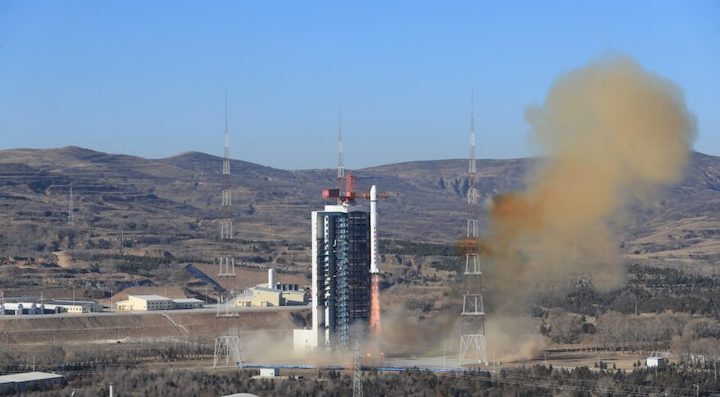17.01.2022

HELSINKI — A Long March 2D carried the classified Shiyan-13 test satellite into orbit late Sunday, marking the start of what is planned to be a busy year of launches for China.
A two-stage, hypergolic Long March 2D climbed into clear blue skies above the Taiyuan Satellite Launch Center in north China at 9:35 p.m. Eastern Jan. 16. Insulation tiles began to fall away from the launch vehicle after it cleared the tower.
The China Aerospace Science and Technology Corp. (CASC), the country’s state-owned main space contractor, announced launch success within 20 minutes of liftoff.
The payload, announced as Shiyan-13, was later tracked in a 468 by 493-kilometer orbit inclined by 97.44 degrees. Chinese state media provided no information regarding the payloads or uses of Shiyan-13.
The Innovation Academy for Microsatellites under the Chinese Academy of Sciences (CAS) developed the Shiyan-13 satellite. The Shanghai Academy of Spaceflight Technology (SAST) provided the launcher.
A two-meter-diameter satellite-rocket separation device was used the first time with the Long March 2D due to special requirements of the satellite interface, CASC stated.
Shiyan are understood to be a series of test satellites, with first launched in 2004. Shiyan satellite numbers are often non-sequential and have been developed by a range of entities, including the China Academy of Space Technology (CAST), CAS and the Harbin Institute of Technology (HIT).
China currently has more than ten Shiyan satellites in Sun-synchronous and geosynchronous orbits. Shiyan-10, launched in September 2021, remains in a geosynchronous transfer orbit (1,046 by 40152 kilometers inclined by 51 degrees) following an apparent anomaly affecting the satellite after launch.
CASC is planning more than 40 launches for 2022, following up on its 48 Long March launches last year. The main task will be six launches to complete the country’s three-module, T-shaped Tiangong space station.
The Long March 2D is scheduled to launch more than 15 times during the year, according to CASC. The rocket can launch from all three of China’s inland national launch centers at Jiuquan, Taiyuan and Xichang.
Taiyuan will host the first launch attempt of the Long March 6A, which will feature a liquid core with solid boosters. A new complex has been constructed at Taiyuan for the new launcher.
In 2021 Taiyuan hosted its highest number of launches so far in a calendar year, according to data from the European Space Policy Institute database, helping to facilitate China’s growing launch activity.
China launched 55 times in 2021 and more activity from commercial actors is likely in 2022.
Sunday’s launch was the fourth orbital mission of 2022, following three launches by the United States. Further launches are expected from China before a break for Chinese New Year, falling Feb. 1.
Quelle: SN
+++
China launches new satellite
China launched a new satellite from the Taiyuan Satellite Launch Center in the northern province of Shanxi on Monday.
The satellite, Shiyan-13, was launched by a Long March-2D rocket at 10:35 a.m. (Beijing Time) and entered the planned orbit successfully.
The launch marked the 406th mission for the Long March series carrier rockets.
Quelle: Xinhua
